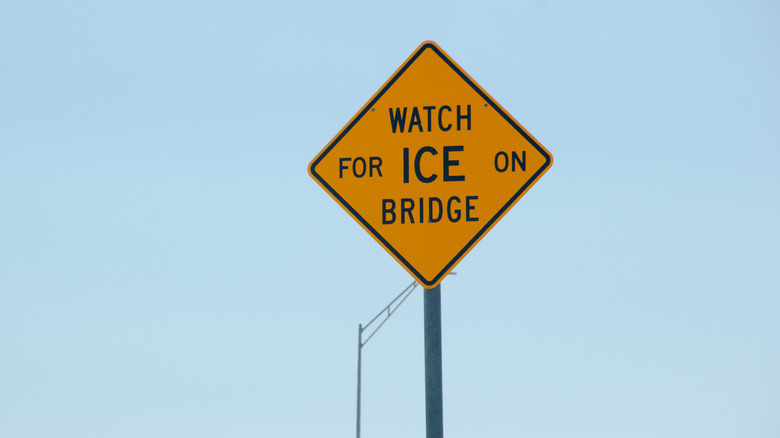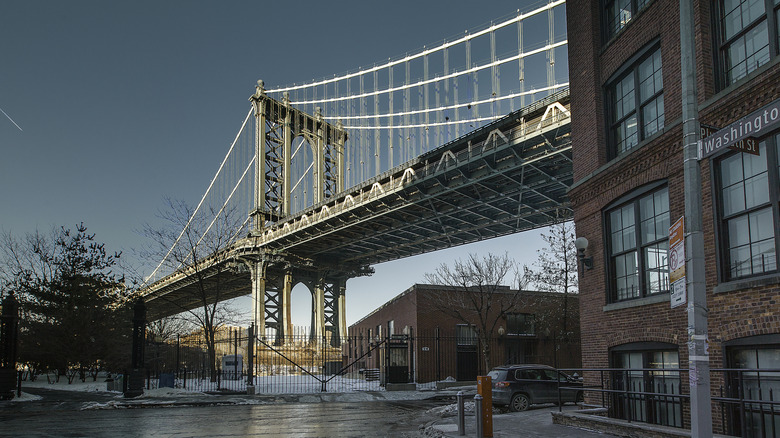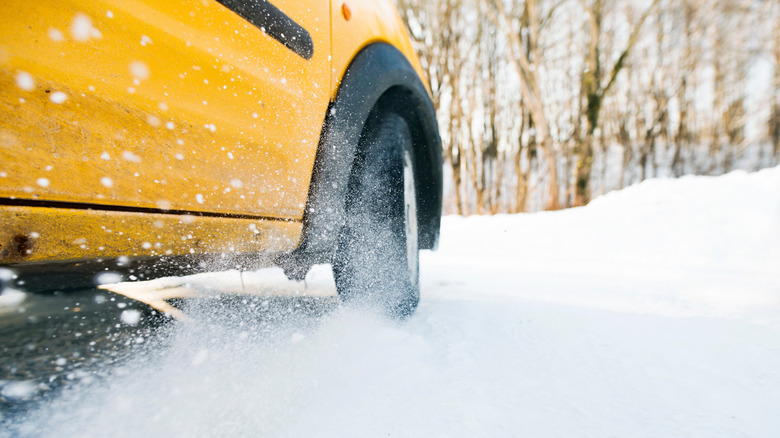The Reason Why Bridges Freeze Before Roads In Winter
You may have noticed signs stating that bridges freeze before roads when driving in the cold. However, if it is equally cold everywhere, why do bridges freeze before roads? There are numerous scientific factors that go against bridges in the winter, including their location, the absence of insulation, the construction material, and some physics.
The ice patches on bridges can cause vehicles to lose traction and become an accident risk for drivers. However, motorcycle riders are the most vulnerable on slippery roads. While salt and other techniques are used to mitigate ice patches, ice can build up quicker on a bridge than on roads. That's why you should be extra careful when driving on a bridge in the cold. Driving slowly is the key to avoiding accidents on bridges, but you can do a lot more to ensure safe driving on ice patches. Here's what causes bridges to freeze before roads and how you can avoid accidents on ice-covered bridges.
The bridge is exposed to cold air on both sides
You may remember from high school science that hot air rises and cold air sinks due to being denser. As bridges, by design, have gaps between them and the surface below, cold air flows under the bridge, making it cooler than the surrounding roads. Additionally, the air can flow on both sides of the bridge, further making it susceptible to cold.
Moreover, bridges lack ground insulation because they have no contact with the ground beneath them. The soil beneath roads not only stops the cold air flow but also helps in trapping heat due to being a good heat insulator.
In addition, the location of bridges plays a role in making them freeze faster. As most bridges are built on water bodies like rivers and lakes, which usually cool the surrounding air, bridges become cooler too. Furthermore, bridges are made of steel and concrete in their construction, both of which are poor insulators of heat. The actual freezing of bridges is a combination of these factors in different proportions.
Avoiding accidents on ice-covered bridges
Ice patches are a major cause of concern due to their slippery nature, and they become even more dangerous when formed on bridges. You should exercise caution when driving on a bridge in winter; however, stay away from the common winter driving myths like using parking brakes or trusting the ABS too much. Whenever crossing a bridge in winter, drive slowly to avoid slipping.
Remember, ice patches will completely alter how your vehicle brakes, accelerates, and steers. If possible, try staying in the same lane and avoiding frequent braking. Moreover, don't accelerate too hard as it can cause the wheels to spin. Driving at a consistently slow speed in one lane is the best way to drive on a bridge in the cold.
That said, other vehicles are also at risk of slipping on ice patches, so it's important to remain alert to other vehicles and your surroundings. Try maintaining enough distance between vehicles to give you enough time to react in case of an accident.


